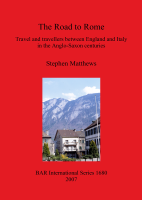Description
BOOK DESCRIPTIONThis book started its life as a study of people travelling between England and Rome from the Augustinian Mission until the close of the Anglo-Saxon period but that proved to be too limiting a subject, for two reasons. One was that so much of the evidenceabout how people travelled around lay in continental sources and it seemed foolish to ignore it simply as a matter of principle. The second is that the means by which people travelled proved to be so exhaustive a study that it led into all kinds of by-ways: accommodation, money carrying and changing, safety, language and a whole range of human problems that still exist in modern travel but are more easily solved for the traveller, usually by other people. It was not enough to catalogue the travellers: the question turned to, how did they manage to do it before the days of organised mass travel in the high middle ages? The later centuries have been better studied, but the earlier ones have not. The result is thus something of a hybrid: more than a study of English sources alone, but less than a study of the whole of European travel. The theme is primarily the north-south routes that converged on the Alps and joined the north of Europe to Italy. Where appropriate, the author has confined his evidence to material from England, that is, to those people who made the journey and their motives, the timing and duration of their journeys, and the routes that they followed. Elsewhere, in sections which address the mechanics of travel, he has widened the range of sources, to include material from all Anglo-Saxon sources irrespective of where the journey was made, provided that it was compatible with a journey to Rome. The author has also adopted some contemporary foreign parallels where Continental experience would match English, thus including material ranging from Gregory of Tours at the beginning of our period, and Albert of Stade, some time after the end. In including these additional sources the author has tried to throw light on the problems of travellers toand from England rather than provide what would be an inadequate description of the whole of continental travel.











